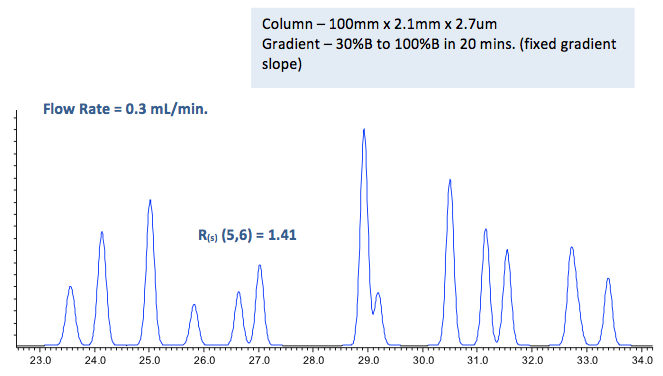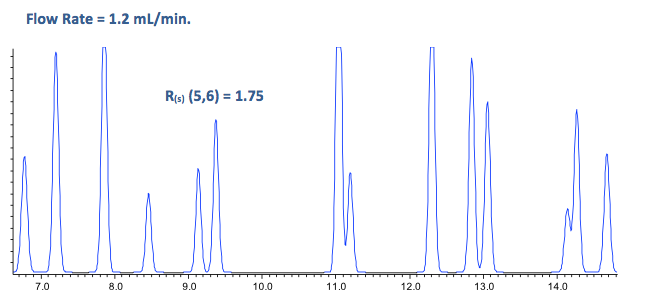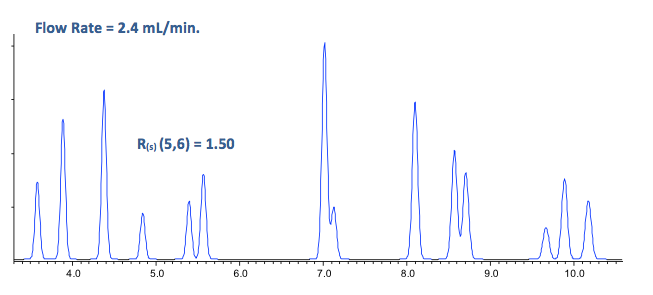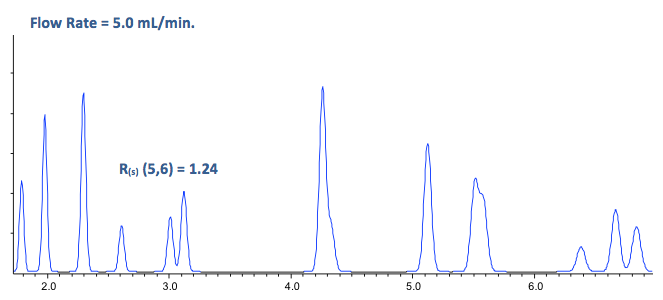The LCGC Blog: Troubleshooting Retention Time Issues in Reversed Phase HPLC
I got into a discussion with a learned colleague recently regarding the relationship between peak height and flow rate in gradient HPLC. We haven't really resolved the discussion, there are suggestions regarding "peak focussing," the number of column volumes in relation to the gradient volume (number of column volumes per minute), increases in efficiency etc.
I got into a discussion with a learned colleague recently regarding the relationship between peak height and flow rate in gradient HPLC. We haven't really resolved the discussion, but there are suggestions regarding "peak focussing," the number of column volumes in relation to the gradient volume (number of column volumes per minute), and increases in efficiency, and we have agreed to say the relationship is "complex!" The discussion did cause me to reflect on how flow rate in gradient HPLC can affect the retention as well as the selectivity, unlike in isocratic HPLC where flow rate does not have a "useable" effect on selectivity.
The equation below demonstrates how flow rate affects retention in gradient HPLC.

Where
k* is the retention factor of analyte at column midpoint
tg is the gradient time (mins.)
F is the flow rate (mL/min.)
Δ Φ is the change in %B (expressed as a decimal, so 10 – 60%B would be 0.5)
Vm is the volume of mobile phase
S is the constant based on slope of log k v's %B curve (isocratic) – a value of 5 is used for small molecules
So what is the relationship between gradient retention factor (k*), selectivity, and resolution, and how can we use these interconnected variables in a practical situation?
The chromatograms in Figure 1 demonstrate a number of separations of a test mix containing neutral analytes carried out using the same column and gradient slope but different eluent flow rates.





Figure 1: Effect of flow rate on the selectivity of a critical peak pair with constant gradient slope in reversed phase HPLC.

Figure 2: Resolution as a function of flow rate in constant gradient slope reversed phase HPLC separation of neutral test compounds.
Figure 2 summarizes the relationship between eluent flow rate and resolution of the peak 5 and 6 in the chromatograms from Figure 1. It is clear that the relationship between eluent flow rate and retention (k*) also produces an effect which results in an "optimum" flow rate for the separation at hand. Simply put, the selectivity and efficiency are changing with gradient retention factor (k*) in such a way as to produce an optimum flow rate for the separation of the critical peak pair.
It follows then that flow rate can be used as a parameter to optimize the resolution between critical pairs in gradient HPLC. This wouldn't be the first parameter that I would look to optimize in a separation – quite obviously. And there will be readers who are crying "robustness issues" as they read these words. However, modern pumps are capable of reproducibly delivering a pretty consistent flow rate and if it means a better working separation between critical peak pairs – then I'm going to use flow rate to get the very best out of my separation.
Of course the difference in flow rates shown above is rather radical and results in large changes in retention behavior – so the gain in resolution should be balanced with a consideration of analysis time, but isn't everything we do about compromise?
Something neat which goes against "current thinking" comes into play here. Consider Equation 1 again and, thinking about Retention Factor rather than Retention Time, if we double the flow rate and halve the gradient time, then we should get a very similar separation in half of the time.
This is exemplified in Figure 3 below

Figure 3: Using the gradient retention factor equation to obtain suitable resolution in minimum time – which is the perfect description on method development.
Of course I appreciate that there are other "problem" peak pairs within this particular chromatogram, however I'm really only interested in peaks 5 and 6 in this particular exercise, and Figure 3 shows that by doubling the flow rate from the "optimum" value obtained in Figure 1 (1.2 mL/min), but halving the gradient time (from 20 mins to 10 mins), then we have a very similar separation in a little over half the analysis time!
While some of the relationships between parameters in Gradient HPLC are "complex," others are reasonably straightforward, and having a good grasp of the basic equations which govern the relationships in gradient HPLC can lead to a better insight and more separation choices when we are developing and optimizing methods. From Equation 1 you will also notice that I can obtain a constant k* for the separation (constant selectivity) by doubling the flow rate but also doubling the column length (doubling Vm) or doubling the gradient range (Δ Φ). I can switch to a column twice as long (take care with column back pressure generated), or I can double the gradient range (e.g. for a 20 to 60%B gradient I can extend the range from 20 to 100%B and get the same effect).
For more information, contact either Bev (bev@crawfordscientific.com or Colin (colin@crawfordscientific.com). For more tutorials on LC, GC, or MS, or to try a free LC or GC troubleshooting took, please visit www.chromacademy.com
.
The LCGC Blog: Historical (Analytical) Chemistry Landmarks
November 1st 2024The American Chemical Society’s National Historic Chemical Landmarks program highlights sites and people that are important to the field of chemistry. How are analytical chemistry and separation science recognized within this program?

.png&w=3840&q=75)

.png&w=3840&q=75)



.png&w=3840&q=75)



.png&w=3840&q=75)